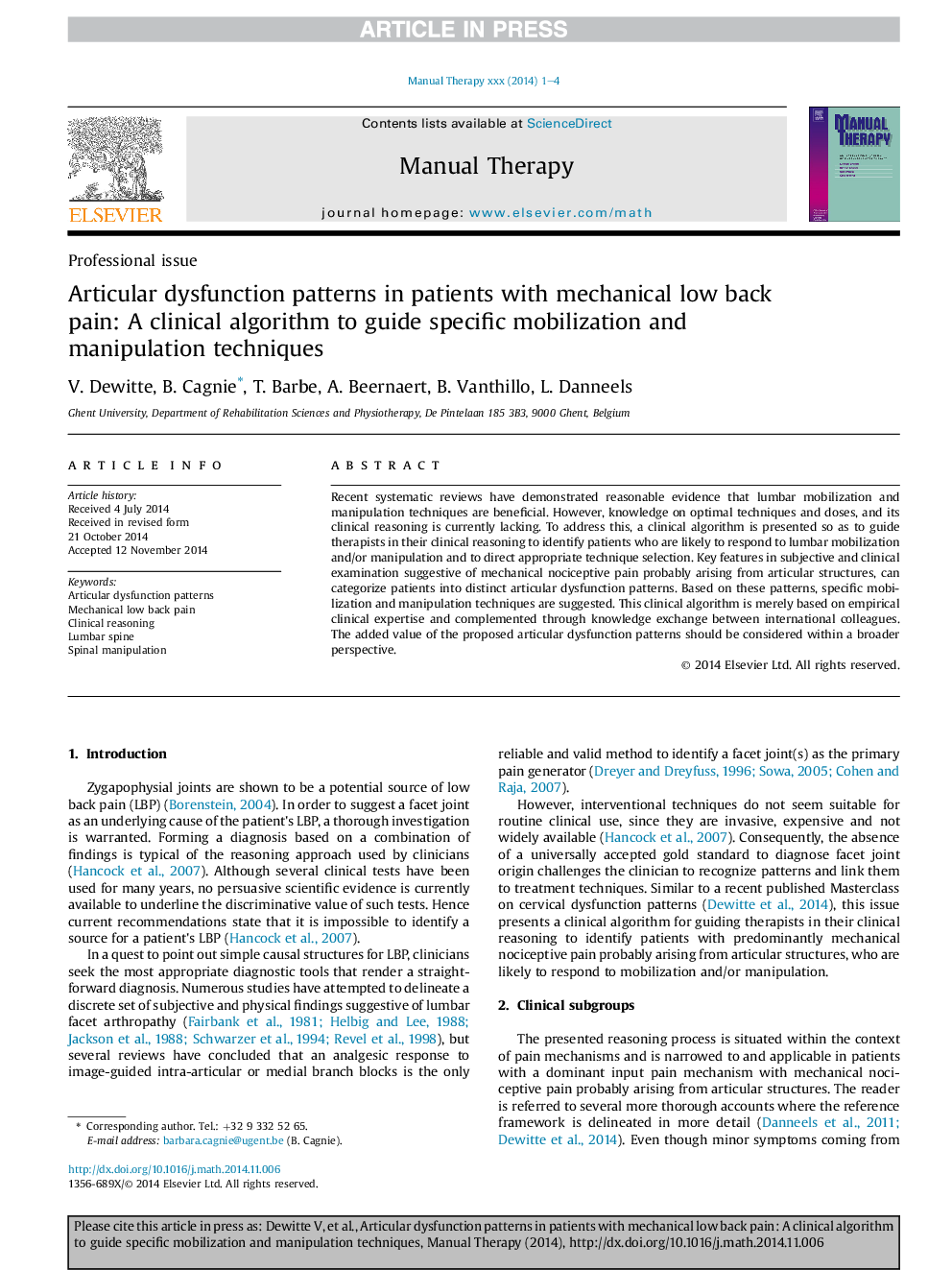| Article ID | Journal | Published Year | Pages | File Type |
|---|---|---|---|---|
| 5864898 | Manual Therapy | 2015 | 4 Pages |
Abstract
Recent systematic reviews have demonstrated reasonable evidence that lumbar mobilization and manipulation techniques are beneficial. However, knowledge on optimal techniques and doses, and its clinical reasoning is currently lacking. To address this, a clinical algorithm is presented so as to guide therapists in their clinical reasoning to identify patients who are likely to respond to lumbar mobilization and/or manipulation and to direct appropriate technique selection. Key features in subjective and clinical examination suggestive of mechanical nociceptive pain probably arising from articular structures, can categorize patients into distinct articular dysfunction patterns. Based on these patterns, specific mobilization and manipulation techniques are suggested. This clinical algorithm is merely based on empirical clinical expertise and complemented through knowledge exchange between international colleagues. The added value of the proposed articular dysfunction patterns should be considered within a broader perspective.
Related Topics
Health Sciences
Medicine and Dentistry
Complementary and Alternative Medicine
Authors
V. Dewitte, B. Cagnie, T. Barbe, A. Beernaert, B. Vanthillo, L. Danneels,
